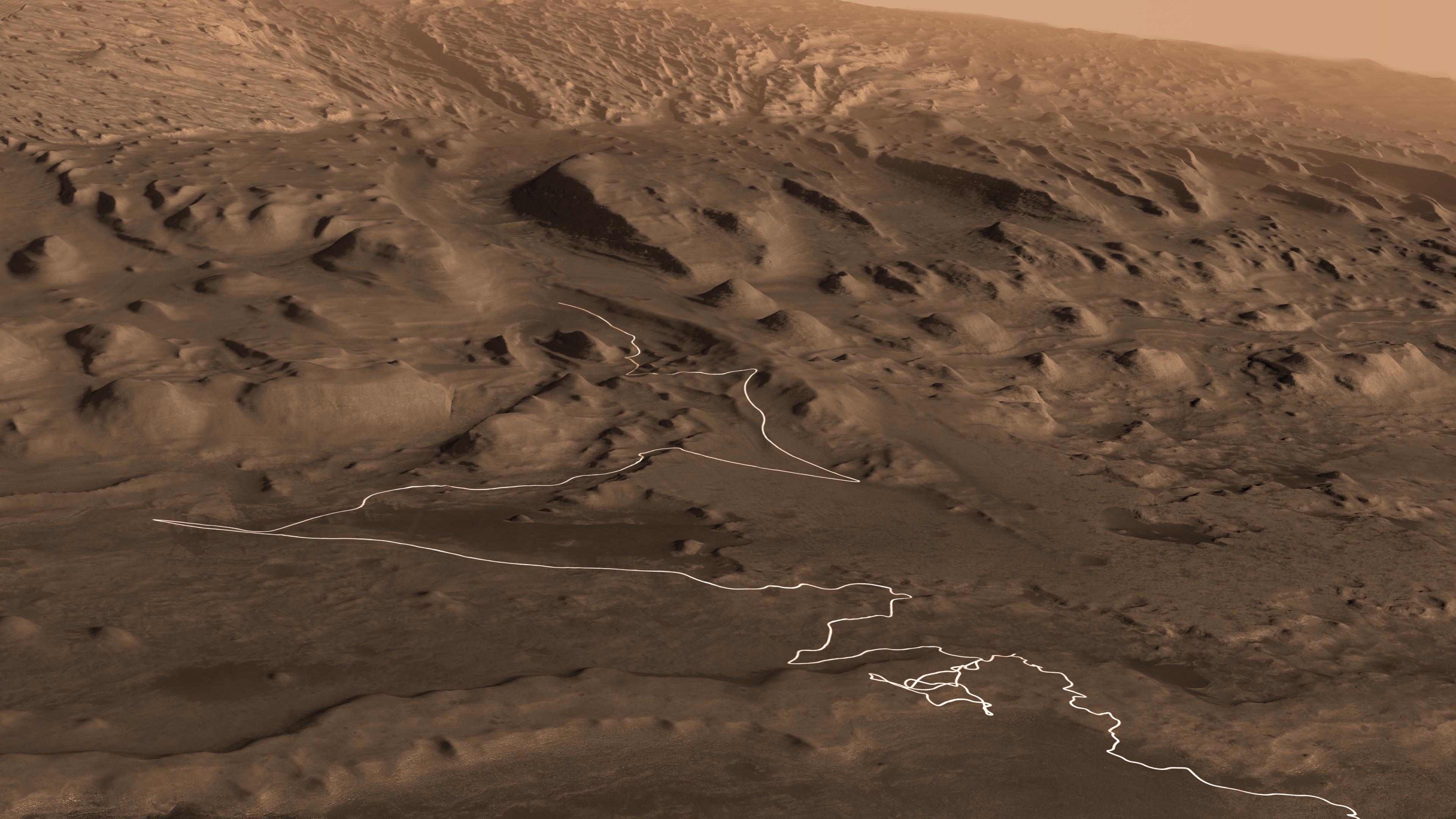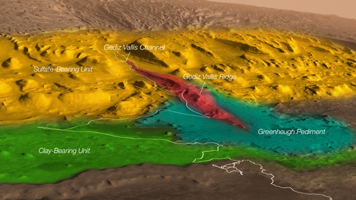
|
Curiosity’s Proposed Path up Mount Sharp
- Click the image above for a larger view
- Full-Res JPEG (3840 x 2160) (743.4 kB)
- Full-Res TIFF (3840 x 2160) (13.7 MB)
Caption:

Annotated Image
Click on the image for larger version
This animation shows a proposed route for NASA's Curiosity rover, which is climbing lower Mount Sharp on Mars. The annotated version of the map labels different regions that scientists working with the rover would like to explore in coming years. A flyover video explains them in more detail.
Data used in creating this map came from several instruments on NASA's Mars Reconnaissance Orbiter (MRO), including the High Resolution Imaging Science Experiment (HiRISE), Compact Reconnaissance Imaging Spectrometer for Mars (CRISM) and the Context Camera (CTX). The High Resolution Stereo Camera (HRSC) instrument on the European Space Agency's Mars Express also contributed data.
Background Info:
The University of Arizona, in Tucson, operates HiRISE, which was built by Ball Aerospace & Technologies Corp., in Boulder, Colorado. The Johns Hopkins University Applied Physics Laboratory in Laurel, Maryland, led the work to build CRISM, which it operates in coordination with an international team of researchers from universities, government and the private sector. Malin Space Science Systems in San Diego built and operates CTX. NASA's Jet Propulsion Laboratory in Pasadena California, a division of Caltech, manages the Mars Reconnaissance Orbiter Project for NASA's Science Mission Directorate in Washington.
Cataloging Keywords:
| Name | Value | Additional Values |
|---|---|---|
| Target | Mars | |
| System | ||
| Target Type | Planet | |
| Mission | Mars Reconnaissance Orbiter (MRO) | Mars Express, Mars Science Laboratory (MSL) |
| Instrument Host | Mars Reconnaissance Orbiter | Curiosity Rover |
| Host Type | Orbiter | Rover |
| Instrument | High Resolution Imaging Science Experiment (HiRISE) | Compact Reconnaissance Imaging Spectrometer for Mars (CRISM) |
| Detector | ||
| Extra Keywords | Color, Map | |
| Acquisition Date | ||
| Release Date | 2019-05-15 | |
| Date in Caption | ||
| Image Credit | NASA/JPL-Caltech/ESA/Univ. of Arizona/JHUAPL/MSSS/USGS Astrogeology Science Center | |
| Source | photojournal.jpl.nasa.gov/catalog/PIA23179 | |
| Identifier | PIA23179 | |
